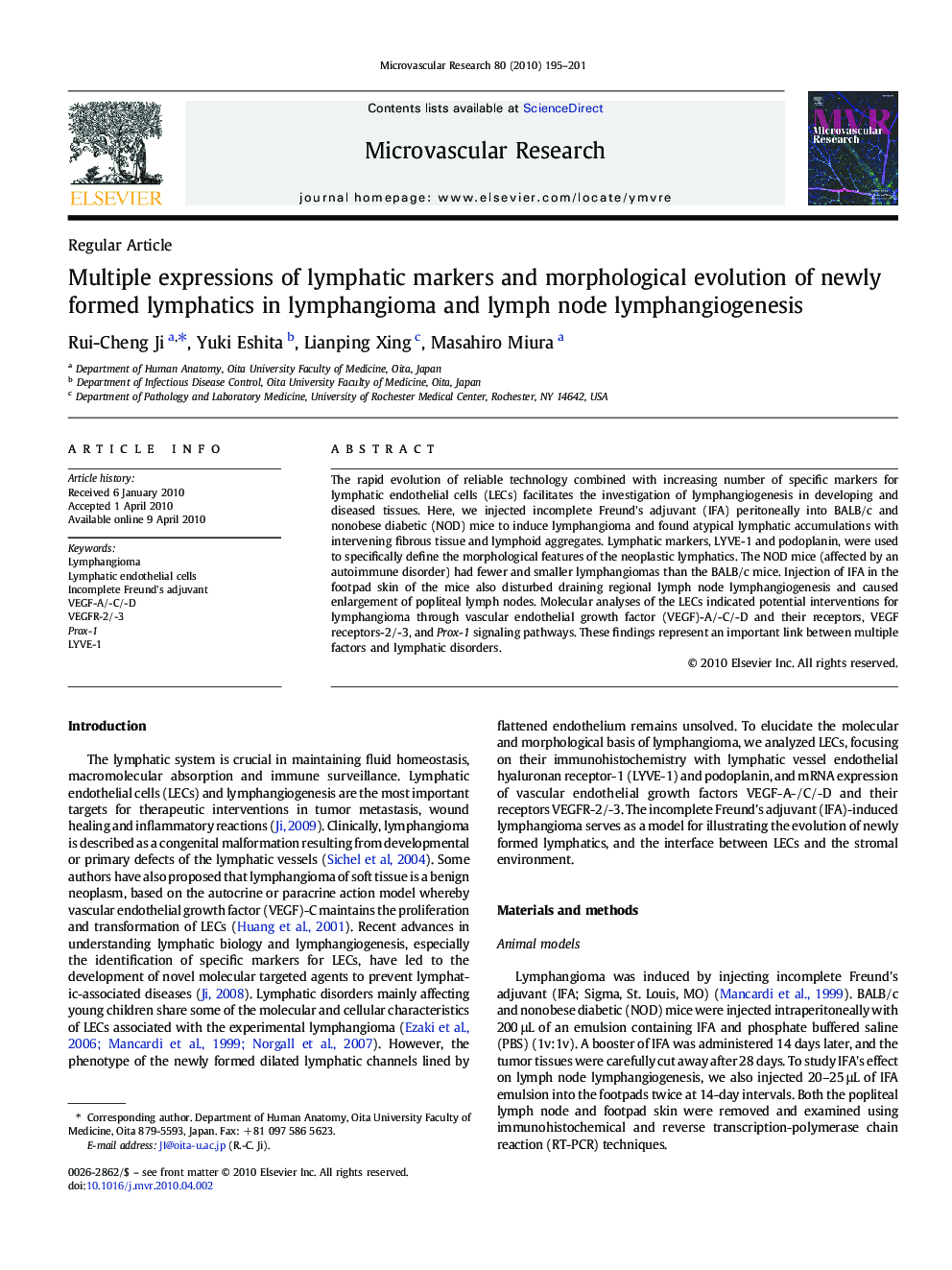| Article ID | Journal | Published Year | Pages | File Type |
|---|---|---|---|---|
| 1995066 | Microvascular Research | 2010 | 7 Pages |
The rapid evolution of reliable technology combined with increasing number of specific markers for lymphatic endothelial cells (LECs) facilitates the investigation of lymphangiogenesis in developing and diseased tissues. Here, we injected incomplete Freund's adjuvant (IFA) peritoneally into BALB/c and nonobese diabetic (NOD) mice to induce lymphangioma and found atypical lymphatic accumulations with intervening fibrous tissue and lymphoid aggregates. Lymphatic markers, LYVE-1 and podoplanin, were used to specifically define the morphological features of the neoplastic lymphatics. The NOD mice (affected by an autoimmune disorder) had fewer and smaller lymphangiomas than the BALB/c mice. Injection of IFA in the footpad skin of the mice also disturbed draining regional lymph node lymphangiogenesis and caused enlargement of popliteal lymph nodes. Molecular analyses of the LECs indicated potential interventions for lymphangioma through vascular endothelial growth factor (VEGF)-A/-C/-D and their receptors, VEGF receptors-2/-3, and Prox-1 signaling pathways. These findings represent an important link between multiple factors and lymphatic disorders.
